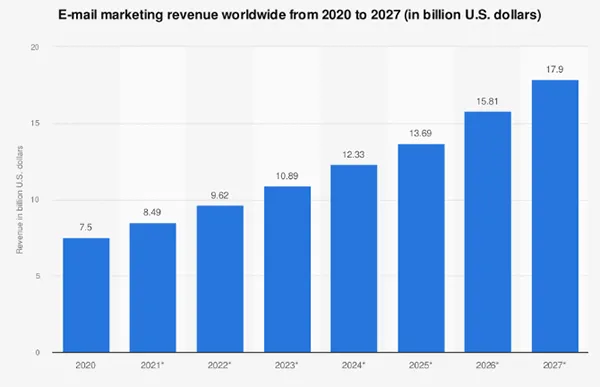Only an email marketer knows the value of email marketing. Going your marketing emails in a spam folder can really be a waste of time, money, and effort. But, have you ever wondered why your emails are marked as spam?
You may have used the right email marketing tactics, like providing convincing reasons to click, utilizing high-quality images and graphics, writing descriptive essays, or offering attractive goods and services. Still, the problem persists.
Don’t worry! We’ve got your back. In this article, you’ll find all the answers to your questions related to your emails getting marked as spam and possible solutions. So, let’s get into it!
Common Hints that Your Emails are Marked as Spam
There might be several reasons for your emails going to the spam folder. Let’s take a look at some of them to identify what can cause it.
- Recipient Feedback: In any case, if you are in contact with any of your recipients, like your personal contacts, colleagues, etc., it is good to take feedback from them. It can provide you an insight into how many emails of yours are going to spam.
It can also help in knowing if your follow-up emails are landing in the spam folder. This feedback can provide valuable details about inbox placement.
- Open Rates: One of the most significant engagement metrics, determining if your messages are making it to the inbox. The more the people open them, the more the chances of them making it to the inbox. Finding a rapid drop in the open rate indicates that emails are going to spam.
- Bounce Rates: To understand in simple words, bounce means when a server rejects the email it never gets to its destination. And, when a server rejects your email, it is possible that other servers also see you as spam.
In many cases, the sender doesn’t receive a bounce and that doesn’t mean they are putting the email in their inbox.
- Sender Tools: There are various sender tools available on the internet to assist with reporting real data. They can provide insights into delivery errors, reputation, authentication checks, and more. Some reliable tools you can utilize are Google Postmaster and Microsoft SNDS.
- Sender Reputation: This is another metric to calculate whether the emails are going to spam. It is a score that Internet Service Providers give to email domains based on various factors like the number of emails sent from the domain, how often the emails are marked as spam, etc.
Prevent Your Emails from Going to the Spam Folder

(This graph shows the email marketing revenue worldwide from 2020 to 2027, in US$ billion).
Here, in this section, we have gathered some solutions to avoid emails marked as spam. Read on to know what to do next.
- Be Obedient to Internet Privacy Laws: The sender should be aware of laws governing email marketing and Internet privacy. The most important act, significant for marketers, is CAN-SPAM (Controlling the Assault of Non-Solicited Pornography and Marketing).
This act determines an email as spam in the case of:
- Email sent without the permission of the recipient.
- Without including an email address,
- Without including a way for the receiver to opt-out,
- And, writing an expository essay with a false or misleading subject line.
- Email Authentication: Email authentication is the key to identifying yourself as a reliable sender. It ensures the servers and receivers that the emails you’re delivering are legitimate.
Inbox providers trust an authenticated email; hence, it increases the chances better of email landing straight in the inbox.
- Reputable Email Marketing Program: Spam filters usually filter out emails with IP addresses associated with the sender’s email address and see if there are any complaints against the email provider. Therefore, it is vital to opt for a reputable email provider.
Trustworthy email providers ensure that no spammer utilizes their platforms. Some email marketing software providers even offer features to help marketers avoid spam triggers, such as not using a physical address or using an email address that looks doubtful.
- Filter Out Your Email List: Sending emails to inactive accounts is also a sign of spam email content. This is basically a metric that is used by spam filters. If they find the percentage of emails you send to the inactive account is high, they’ll consider your emails as spam.
Therefore, it is necessary to regularly filter and remove the email addresses that appear inactive.
- Take Advantage of Spam Checkers: What can be better than the tool that helps you tell if your email is likely to be marked as spam? Fortunately, that’s possible! Several tools are available on the internet to provide such features.
Although Internet Service Providers also tell how the end messages are being filtered, spam checking tools give peace of mind to the sender.
Do You Know?
4 billion people around the globe use emails daily. And, this number is expected to grow to 4.6 billion by 2025. Among them, 99% check their email inbox daily.
Final Thoughts
There can be countless reasons why your emails are marked as spam. Such as not having explicit permission from the recipient, not setting up email authentication, sending too many emails from a recent account, or the content triggering spam filters.
However, there are many solutions mentioned in the article to overcome the problem. The world of email marketing is evolving as the internet. And this means staying up to date with all the latest trends, laws, and changes is also necessary.
It is vital to keep in mind that being honest with the recipients is the only way to succeed in email marketing.







